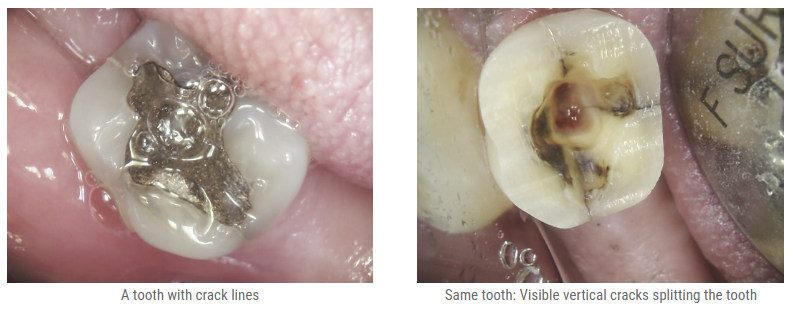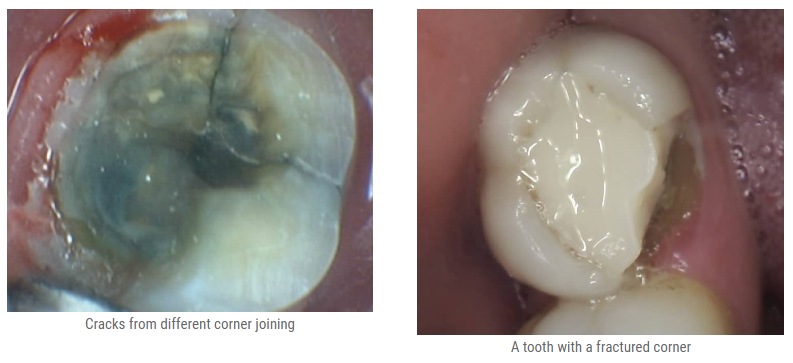50 years ago, when dental drills became available, the landscape of dentistry changed. Instead of taking decay teeth out and replaced with removable dentures, we repaired teeth. This means that the rotten part of teeth were cleaned out and filled in with materials, at the time it was silver-coloured amalgam. As the years go by, it became widely expected that we’ll keep our teeth until we’re old.
50 years on, we have a generation of baby boomers who grew up having their teeth drilled and filled all their lives. They became more aware of dental diseases and what dentistry has to offer. Often they’ll teach their kids to clean their teeth and eat the right things so that their children don’t have to go through what they did. As older patients learnt to look after their teeth better, they encountered less tooth decay and associated toothache. But here’s the problem. Their teeth that have been heavily filled for the past 30-40 years are starting to break and I find myself spending a lot of time fixing broken teeth for older patients.
What a lot of people don’t realize is that fillings don’t make teeth stronger. They’re just there to fill up holes. The more tooth structure we cut away, the weaker it gets. Like a house that collapses, it doesn’t just happen overnight. There were telling signs well before it happened. It may be peeling paint, broken door frames or cracks on the wall. Teeth are the same. We see cracks on the tooth. Or when we see more fillings in a tooth than the actual remaining tooth structure, we start to worry.
I must admit that finding out about cracked tooth is one of the challenges in my profession. This is because the tooth is often pain free until broken. The cracks are not always visible which makes it hard to determine whether the tooth is savable or not. These cracks usually appear in the thinner part of the tooth from biting force. Once the crack is there, it spreads deeper every time the patient puts pressure on the tooth.
Looking at the pictures to the right, this patient came in with pain when he’s biting down onto the tooth. The cracks around the silver filling appeared minimal until we removed the filling. What we saw were cracks that extended to the bottom of the tooth. The tooth was split and there wasn’t anything we can do to save it. In this instance, there was no second chance.

But cracks don’t always spread vertically. Sometimes they extend horizontally across the tooth like the picture to the left. When cracks from different corners of the tooth connect, part of the tooth broke off. This is the problem I encounter almost daily when patient came in with a broken tooth. Now that you understand a bit about cracks, you can see why I consider this a blessing in disguise… because it could’ve been much worse and broken tooth is a sign telling you that the tooth needs protection.

But instead, the broken part of the tooth is often filled as a temporary measure and most patients misunderstood this for a fix. Remember that fillings don’t make the tooth stronger. If anything, they weakens teeth. As different parts of the tooth break away over the years, this process is repeated until the whole tooth is replaced by fillings and that’s usually when everything crumbles down. The sad thing is… we knew it was coming years before.
To your healthy smile.
Dr. Supa
Supa Dental, Melton.



